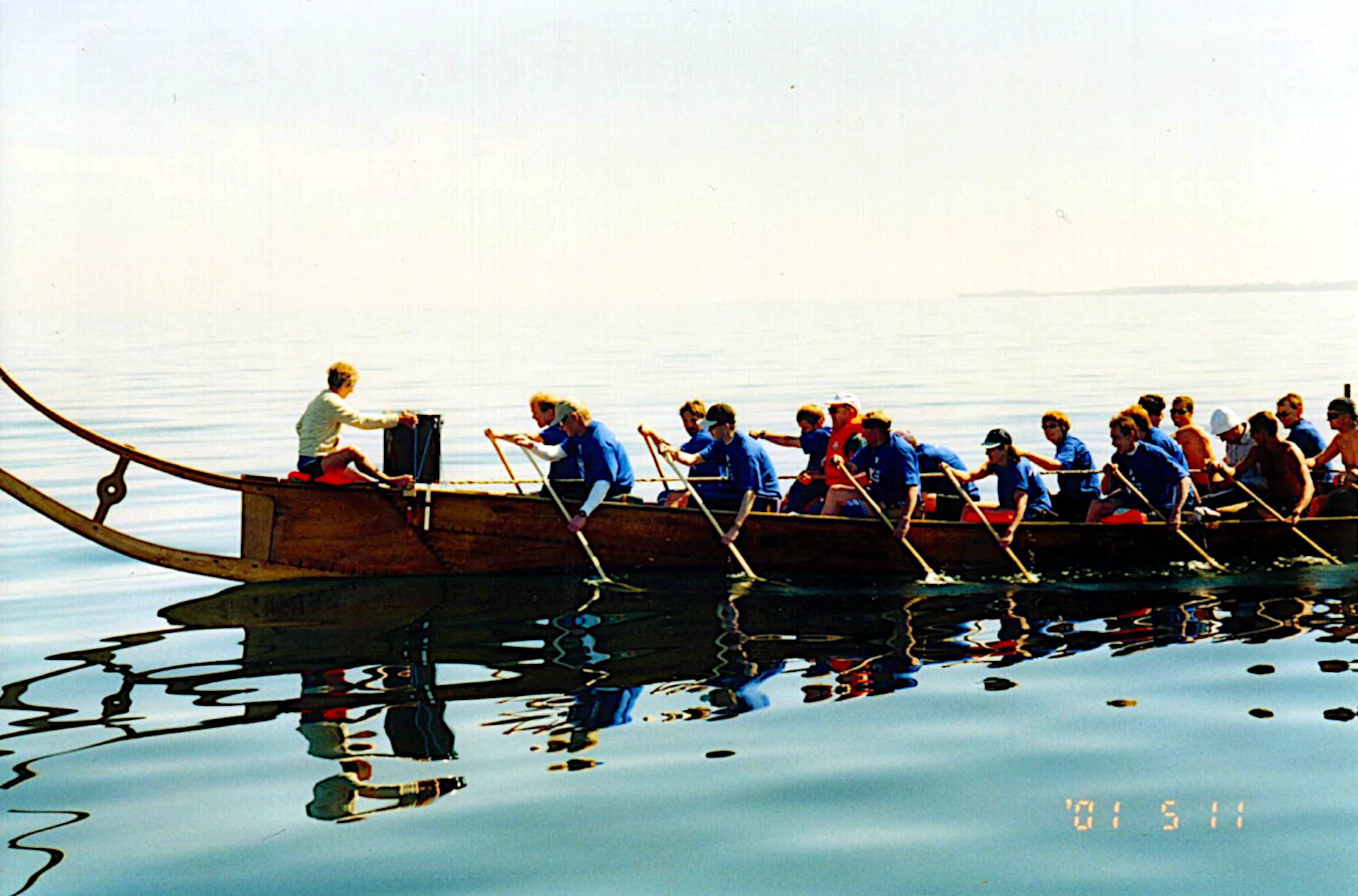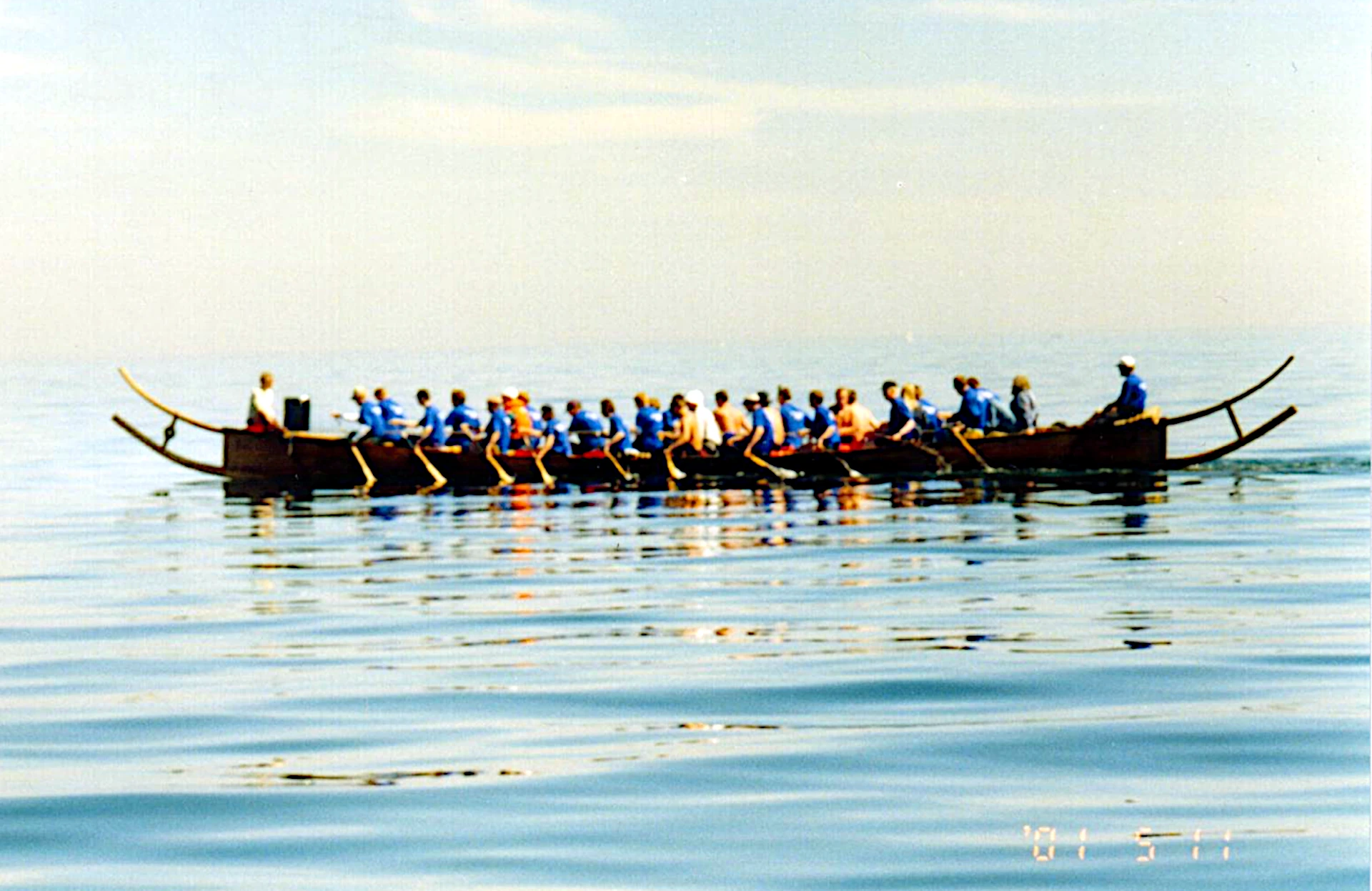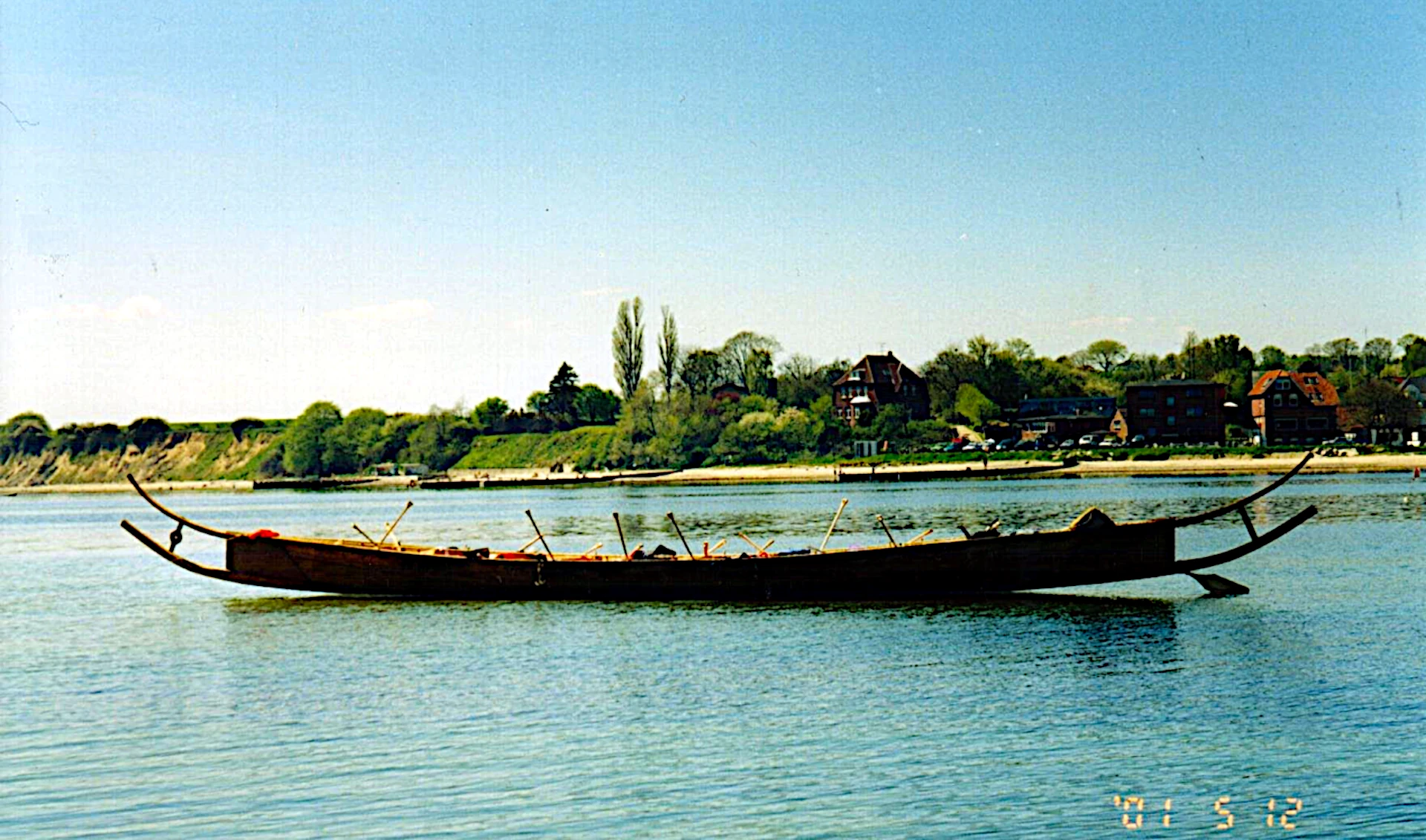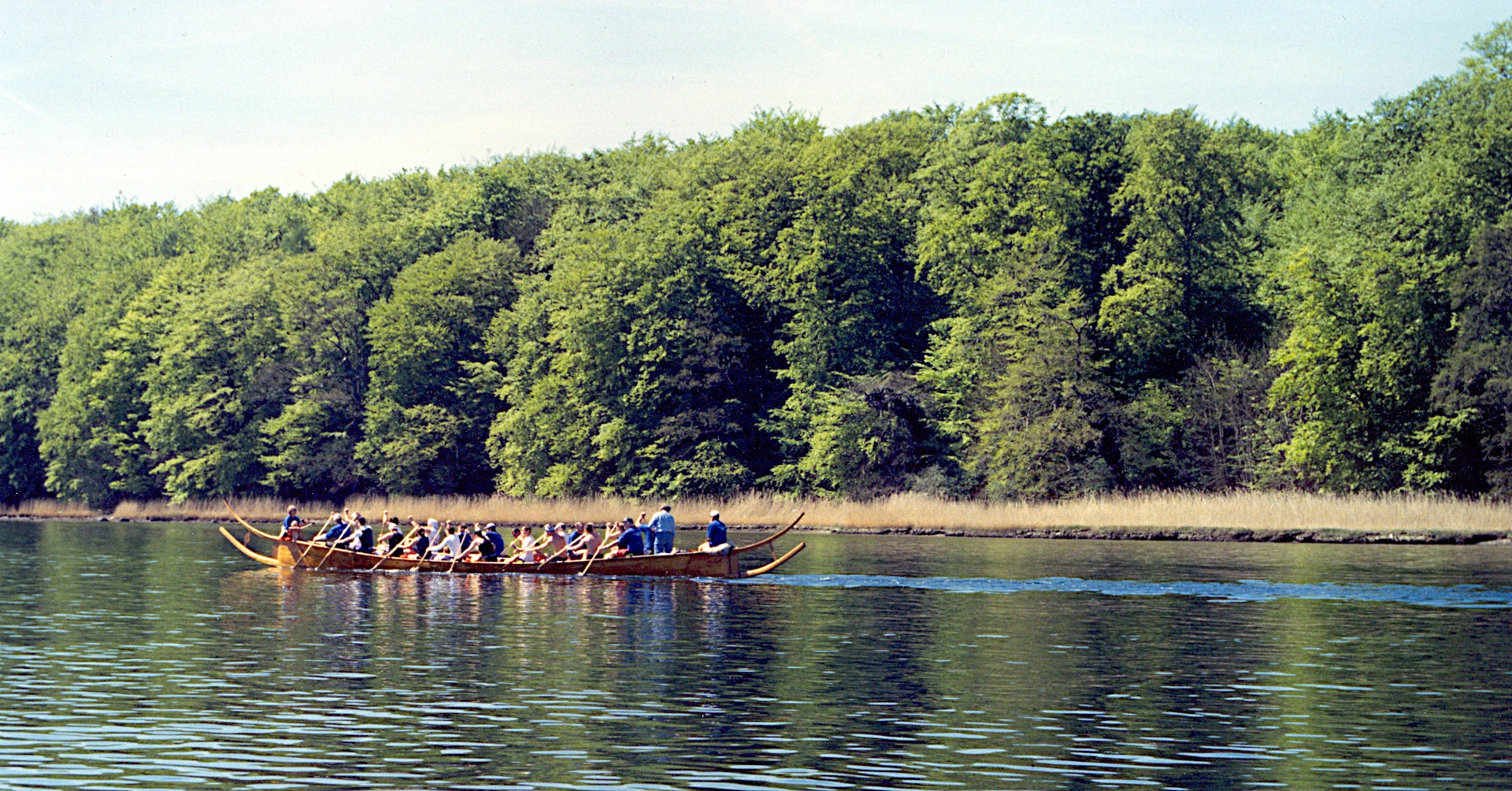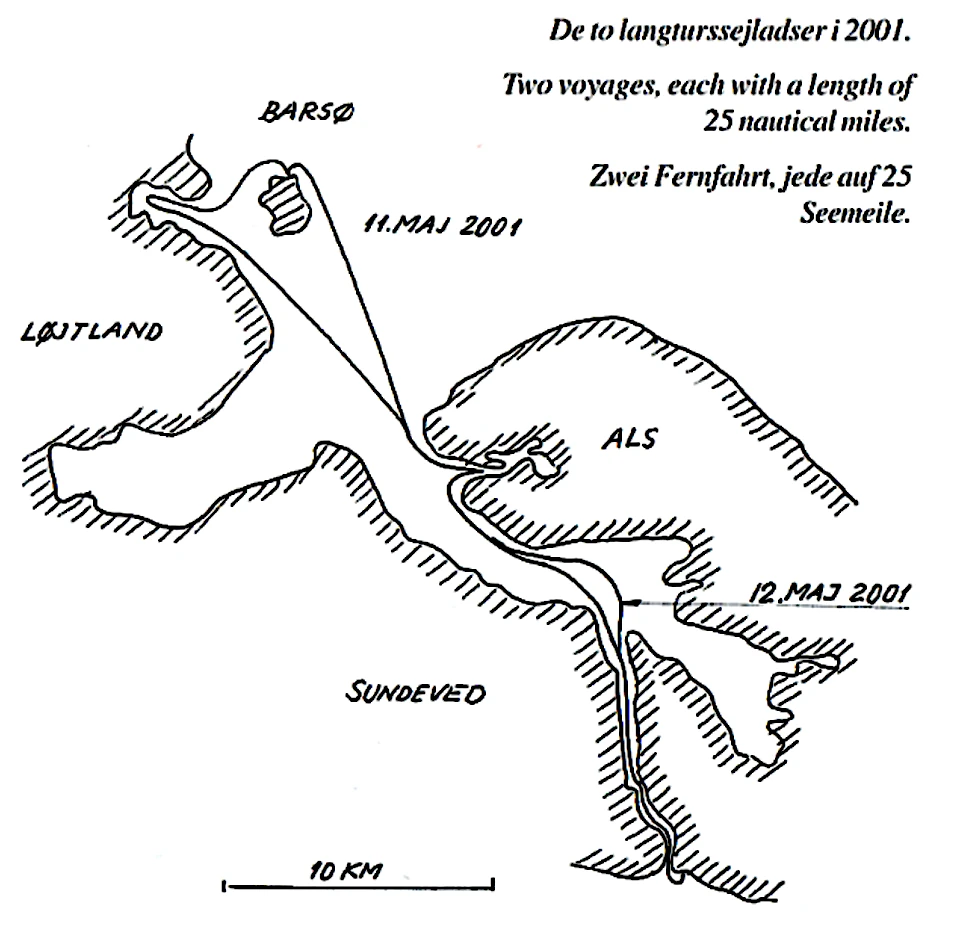The weather during the tests in 2000 was not suitable for long-distance sailing. As mentioned, it was very important to clarify the boat's day cruising potential as an input to the archaeologists' assessments of ancient seafaring connections. In connection with an agreement between NMF, NMU, NM and HSBL to jointly write a volume in the series ‘Ships and Boats of the North’ about the Hjortspring boat, a passage had been included about a renewed test, this time with the sole purpose of determining how far a crew could sail the boat in one day.
NMF again contacted the dragon boat club Nord, whose crew was willing to retest.
In connection with the planning, an agreement was made with DR2 about recordings to be used for a broadcast in the programme ‘Viden om’ about the Hjortspring boat.
On Friday 11 May 2001, Tilia, which had been in the water for a few days, was launched in Dyvig. During the winter, the guild had installed new, stronger and wider bottom boards in the boat. Six new, longer paddles had been manufactured for frames 1, 9 and 10. The paddle shafts were also cut oval where the lower hand grips, and they were generally made lighter. Finally, the blade on all paddles had been sharpened.
Max Vinner was responsible for coordinating the tests together with Rikke Johansen, also from Vikingeskibshallen. As the trips were expected to take place over open water far from the coast, the guild had entered into an agreement with Jørn and Ulla Jensen, who in their 27' motorboat, Jumbo, would act as escort boat together with a motor dinghy from Dyvig Bådelaug. Jumbo would also act as a platform for DR2's video photographer and reporter.
On 11 May, the dragon boat crew arrived, 25 men in total. After the proper weighing, they cast off. On board were all the dragon boat crew, Max, Rikke and two men from the guild. Including large amounts of drinking water (the paddlers were expected to break a sweat), the total weight was 3,023kg.
Tour 1 to Barsø
On 11 May, Tilia started at 11am, sailed out through Stegs Vig and northwards, east and north of Barsø. The weather was ideal, no wind and clear water. This meant that the results were the best achievable.
The pace was chosen to be 52 strokes/minute. On the north coast of Barsø, Tilia entered the beach so the crew could ‘de-water’ and have lunch. The trip continued into Genner Bay, further out and home towards Dyvig. In total, 23 nautical miles were sailed in just over 5 hours.
Søren Boisen had brought along a GPS navigator with memory. This made it possible to measure the route of the sailing trip and its exact extent.
Tour 2 to Sønderborg
The next day, 12 May, Tilia took another long trip, this time south, through Als Fjord and Als Sund. Just south of Sønderborg Castle, we stopped at a small beach to ‘water off’, rest and have lunch.
On the return trip to Dyvig, various experiments were carried out to find a method for the crew to rest in turn. It turned out that a frequency where frames 10 and 5 rested for three minutes, followed by frames 9 and 4 and so on, provided a sufficient rest break for each paddler.
This meant that each individual paddled for 12 minutes and rested for 3 minutes. According to the theory, this should reduce the speed by 6%. In reality, the speed hardly decreased, as the three-minute break increased the power to grab hold. The crew believed that they could continue for many hours if this method was used.
The Dyvig-Sønderborg-Dyvig trip, which was 25 nautical miles, was completed at just under 5 knots.




